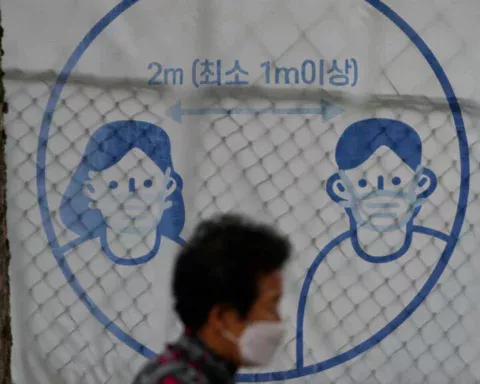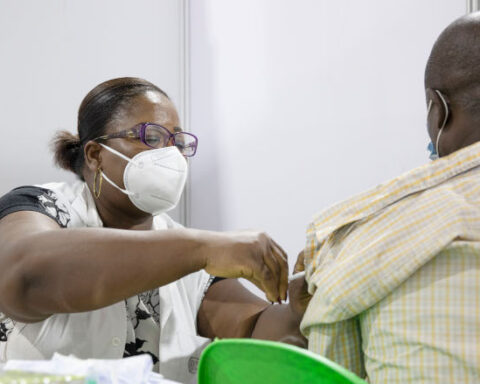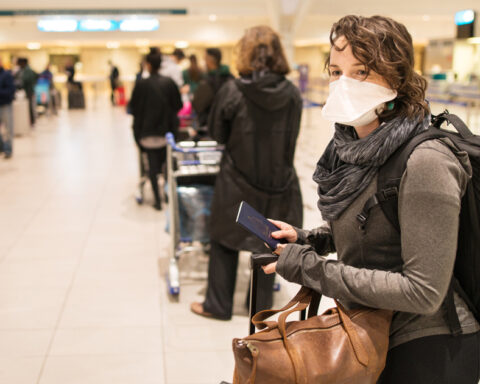Yet, more than a year into the COVID-19 crisis, new cases worldwide are higher than ever. Urgent action is needed to arrest the rising human toll and economic strain.
Ending the pandemic is a solvable problem but requires further coordinated global action.
As the IMF has warned, economic recoveries are diverging dangerously. The disparities will widen further between wealthy countries that have widespread access to vaccines, diagnostics, and therapeutics, and poorer countries still struggling to inoculate frontline healthcare workers. As of the end of April 2021, less than two percent of Africa’s population had been vaccinated. By contrast, over 40 percent of the population in the United States and over 20 percent in Europe had received at least one dose of the vaccine.
It is well understood that there can be no lasting end to the economic crisis without an end to the health crisis. Pandemic policy is thus economic policy. It is critical for global macroeconomic and financial stability, which makes it of fundamental importance to the IMF and other economic institutions. Ending the pandemic is a solvable problem but requires further coordinated global action.
The latest research by IMF staff analyzes multiple dimensions of the fight against the pandemic and proposes realistic targets to bring the pandemic substantially under control everywhere—and the means to achieve them. Building on the work of other agencies, the proposal aims to:
- vaccinate at least 40 percent of the population in all countries by the end of 2021 and at least 60 percent by the first half of 2022,
- track and insure against downside risks, and
- ensure widespread testing and tracing, maintain adequate stocks of therapeutics, and enforce public health measures in places where vaccine coverage is low.
Importantly, the strategy requires not just commitments but upfront financing, upfront vaccine donations, and “at-risk” investment for the world to insure against downside scenarios.
The proposal’s total cost of around $50 billion would include grants, national government resources, and concessional financing.
There is a strong case for grant financing of at least $35 billion. The good news is G20 governments have already identified as important to address the $22 billion grant funding gap noted by the Access to COVID-19 Tools (ACT) Accelerator. This leaves an estimated $13 billion in additional grant contributions needed.
The remainder of the overall financing plan—around $15 billion—could come from national governments, potentially supported by COVID-19 financing facilities created by multilateral development banks.
Saving lives and livelihoods should need no justification, but a faster end to the pandemic could also inject the equivalent of $9 trillion into the global economy by 2025 due to a faster resumption of economic activity. Advanced economies, likely to spend the most in this effort, would see the highest return on public investment in modern history—capturing 40 percent of the cumulative $9 trillion in global GDP gains and roughly $1 trillion in additional tax revenues.
Recommendations for action
The key proposed steps include:
Achieving the vaccination targets
1. Provide additional upfront grants to COVAX of at least $4 billion. This financing will help finalize orders and activate unused vaccine capacity.
2. Ensure free cross-border flows of raw materials and finished vaccines: Such restrictions are jeopardizing access to vaccines for billions of people in the developing world.
3. Immediately donate surplus vaccines: We project at least 500 million vaccines courses (equivalent to around 1 billion doses) can be donated in 2021, even if countries give preference to their own populations. Donations, including for delivery costs, should be done through COVAX so vaccines are shared on equitable and public health principles.
We project the measures identified in steps 1–3 may be sufficient to achieve the 40 percent vaccination target by the end of 2021 and the 60 percent target by the first half of 2022, if no downside risks materialize.
Insuring against downside risks
4. Make at-risk investments to diversify and increase vaccine production capacity by 1 billion doses in early 2022 to handle downside risks in 91 low- and middle-income countries, including from new variants that may require booster shots. [$8 billion]
5. Scale up genomic surveillance and systemic supply chain surveillance with concrete contingency plans in place to handle possible mutations or shocks to the supply chain. These plans should be prepared with the participation of multilateral agencies, vaccine developers and manufacturers, and key national governments. [$3 billion]
Managing the interim period when vaccine supply is limited
6. Ensure widespread testing, sufficient therapeutics, public health measures, and prepare for vaccine deployment . [$30 billion]
7. Urgently evaluate and implement (where approved) dose stretching strategies to expand effective supply. [$2 billion]
Additional needed measures account for $3 billion. Steps 4–7 are needed to insure against downside risks, and to mitigate the health consequences of the pandemic in the interim period.
The proposal complements the work of the G20 High Level Independent Panel, the G7 Pandemic Preparedness Partnership group, and the Report of the Independent Panel for Pandemic Preparedness and Response, which primarily focus on addressing future pandemics. This proposal focuses on what is needed to bring the current pandemic under control. To make it effective, countries need to work together.
The world does not have to live through the pain of another record surge of COVID-19 cases. With strong global action now and with very little in terms of financing relative to the outsized benefits, we can durably exit this health crisis.






